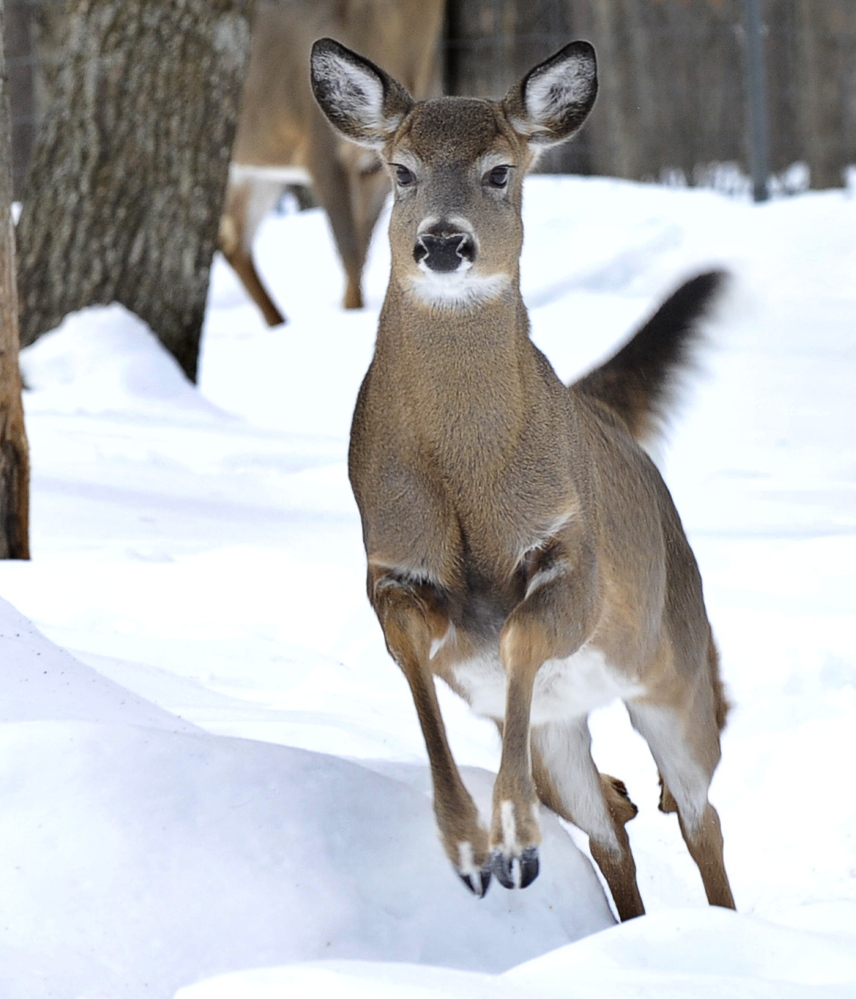It’s winter. Each morning, I begrudgingly extract myself from a warm bed, then make my way downstairs, where I turn on the lights and start my day.
The first step often consists of checking the thermometer. And though I’m only feet away from the woodstove, low digits chill my body and enthusiasm for any sort of outdoor activity.
Whether it’s 5 or 25 degrees, the creatures who live outside are indifferent. Some are sound asleep and will be for weeks. Some pick their days to be active, while others alter how active they are. They have no understanding how strongly conditions can influence whether they’ll survive another winter. They simply do what eons of natural selection have programmed them to do. We, on the other hand, are far more concerned, and while it’s still too early to tell for sure, things are looking pretty good.
The biggest concern among hunters is probably the deer herd. Thanks to a bumper crop of acorns, deer went into winter in great shape. That should provide something of a buffer against their two greatest weather challenges: deep cold and deep snow.
We had plenty of both in December, but last year ended on a somewhat positive note and things already have turned further in the deer’s favor. Heavy, wet snow that knocked down limbs and even trees resulted in a windfall of woody browse, the whitetail’s primary winter food. Then, warm temperatures and even rain reduced snow depth, allowing deer to travel farther and wider to find food and avoid predators – their other major limiting factor. Barring any major weather events the rest of the winter and over-liberal any-deer permit allotments, the herd should continue growing toward numbers we enjoyed in the late 1990s.
Those weather conditions also likely benefited other game species. Traditionally, hare and grouse populations tended to run in fairly regular cycles of about five to seven years. But commercial forest management changed that, and the populations now are more influenced by weather conditions.
Deep snow allows snowshoe hares to access higher twigs they otherwise might not be able to reach. And just having snow allows them to better blend into their surroundings. Snow is less of a factor for grouse, which feed equally well on the ground or in the trees. A relatively mild spring followed by a healthy fall crop of hard and soft mast meant plenty of healthy birds going into the winter that should do just fine.
Somewhat the same can be said about turkeys, although snow is more of a limiting factor. But it depends on how much and what kind of snow we get. The worst case is deep powder, which we had in northern and interior areas. That makes it much harder for these larger gallinaceous birds that prefer to feed on the ground to get around. But warm temperatures followed by bitter cold built up sufficient crust to vastly improve mobility.
Turkeys also benefited from abundant mast, but unlike deer, their fat reserves don’t last all winter, so they’ll need to keep refilling. Help comes in many ways, including silage piles at the local dairy farm, and in many cases, backyard bird feeders. Heavy winds, which we’ve had no shortage of this winter, also knock down remnant nuts and seeds.
As with deer, barring any major weather events, turkeys should make it through winter in pretty good shape, which is good news. A poor hatch in 2014 and a two-bird spring limit in 2015 took a toll. In the areas where I hunt, there were about half as many huntable birds in 2016 as in 2015. But there were plenty of jakes (year-old males) that, if they survive, will be longbeards this coming spring.
Local weather conditions are far less of a factor on waterfowl because they’re migratory, but observations of at least one species suggest potential problems. In a previous column, I discussed a shortening of the sea duck season, and by all indications that was most certainly warranted. In three trips on Casco Bay this winter, I have seen less than a dozen eiders total – a number that might have made up our daily bag in previous years. Hopefully, the birds merely chose to winter somewhere else, but more investigation is advisable.
In the end, I guess animals have the right idea. There’s nothing we can do about the weather, so we may as well ignore it and go on about our business. Sooner or later spring will come again.
Bob Humphrey is a freelance writer and registered Maine guide who lives in Pownal. He can be reached at:
bhunt@maine.rr.com
Send questions/comments to the editors.



Comments are no longer available on this story